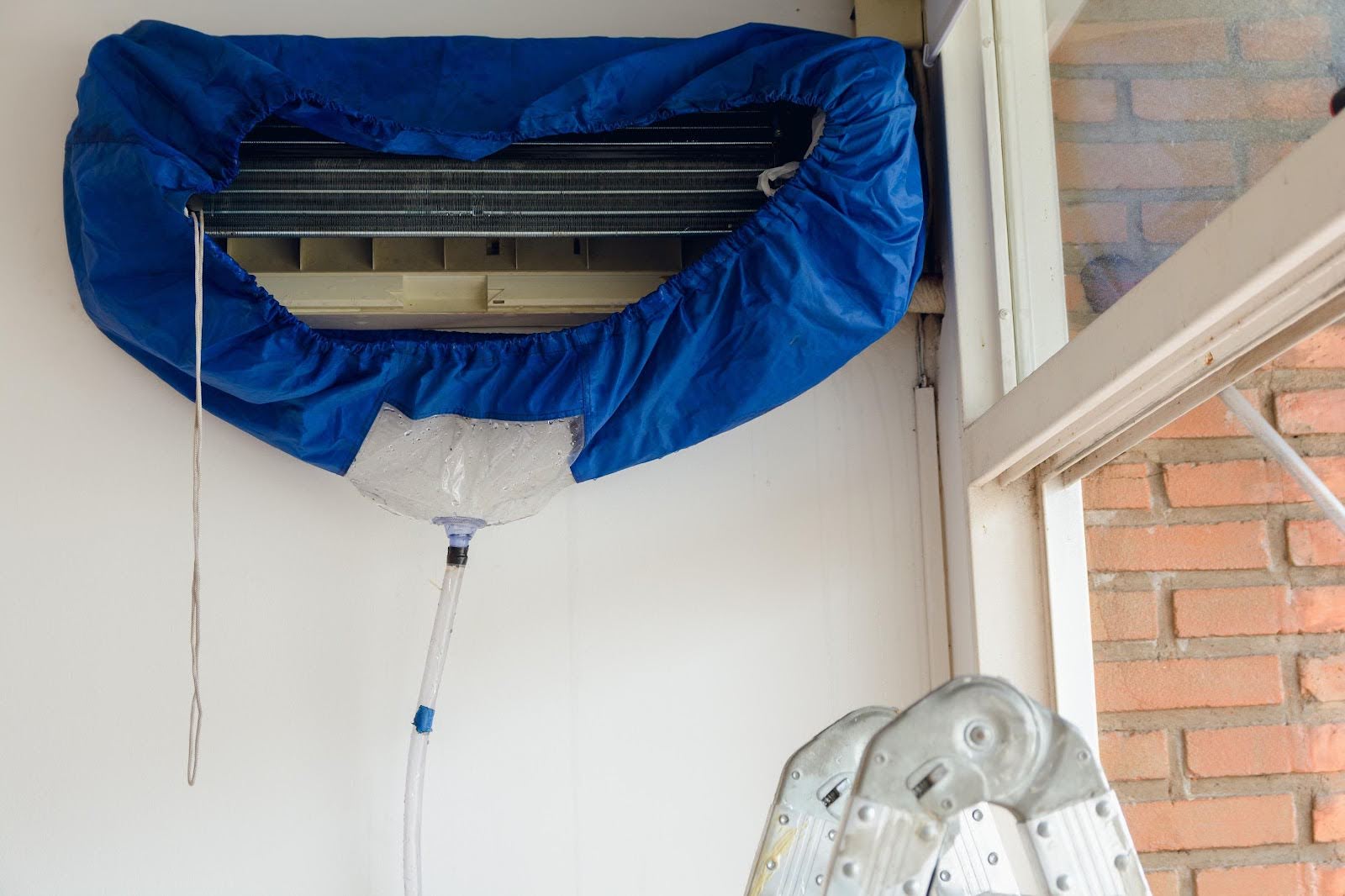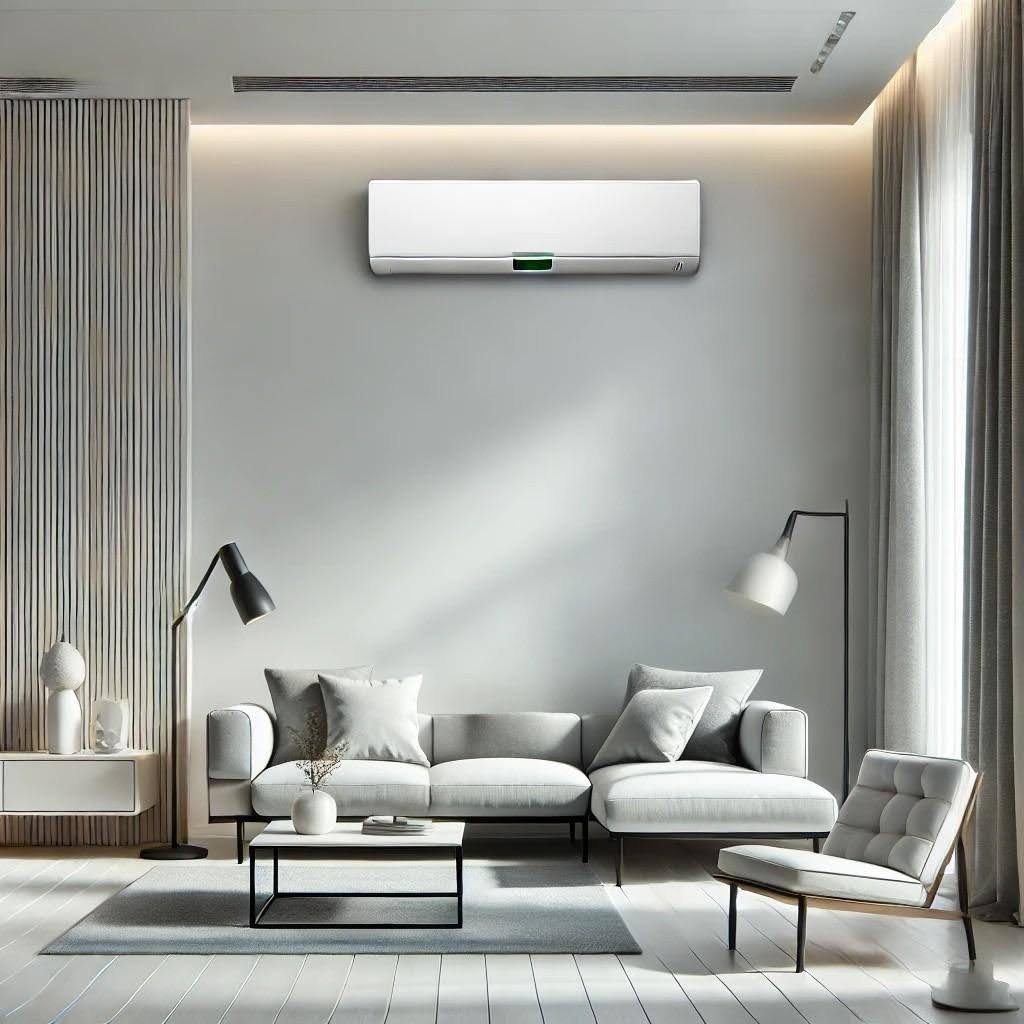No products in the cart.
Upgrading to a mini split heat pump is one of the smartest moves you can make to improve your home’s comfort while lowering your energy bills. But it gets even better! Many homeowners don’t realize there are financial incentives from tax credits to manufacturer rebates that can significantly reduce the upfront cost. Below, we’ll walk you through how to capitalize on these incentives in 2023–2024 and save hundreds (or even thousands) of dollars on your new mini split heat pump installation.
1. Why Mini Split Heat Pumps Are on the Rise
Energy Efficiency & Comfort
Mini splits excel at delivering both heating and cooling efficiently. Unlike traditional central HVAC systems, they allow you to control temperatures zone by zone, reducing energy waste and lowering your monthly utility bills.
Want to learn more about mini split efficiency? Check out our guide: Air Quality and Efficiency of a Ductless Mini Split AC.
Environmental Benefits
Heat pumps use electricity to transfer heat rather than generate it, making them more environmentally friendly. Their high SEER (Seasonal Energy Efficiency Ratio) and HSPF (Heating Seasonal Performance Factor) ratings often qualify them for local and federal energy-saving programs.
If you’re considering a ductless mini split system, you might also be interested in: Why Choose a Ductless Mini Split System?
Reduced Energy Bills
Their efficiency means you’ll likely see a drop in your energy expenses. According to the U.S. Department of Energy, well-maintained heat pumps can slash heating and cooling costs by as much as 30% compared to traditional systems.
Looking for more ways to cut costs? Check out: Simple Tips to Save on Air Conditioning Costs with Your Ductless Mini Split System.
2. Federal Tax Credits: An Overview
One of the primary ways to lower the cost of your mini split installation is to take advantage of federal tax credits. These credits are part of ongoing efforts to encourage energy efficiency in homes across the United States
1. Energy Efficient Home Improvement Credit (EEHIC)
- This credit may allow homeowners to claim a percentage of the installation cost (including labor and equipment) for qualifying energy-efficient home improvements.
- Mini splits often qualify if they meet specific efficiency standards (e.g., certain SEER and HSPF thresholds).
- Check the official IRS guidelines (IRS Form 5695 in many cases) for the exact percentage and maximum dollar amount allowed for the tax year.
Want to know more about how mini split systems work? Read: How Do Ductless Mini Split Heat Pumps Work?.
2. Qualifying Criteria
- The unit must meet or exceed the minimum ENERGY STAR requirements.
- Your contractor or installer should provide a Manufacturer’s Certification Statement or relevant documentation proving eligibility.
- Keep all receipts and proof of payment to claim the credit when you file your taxes.
3. Timing & Deadlines
- Tax credits can change annually, so always confirm that your purchase date and system specifications fall within the year’s guidelines (2023 or 2024, depending on your installation date).
3. State & Local Rebates: Maximizing Your Potential Savings
Beyond federal tax credits, state and local governments as well as utility companies offer rebates for upgrading to energy-efficient HVAC systems. These incentives vary by region, so it’s worth investigating your local programs to see how much more you can save.
1. Utility Company Rebates
- Some utility providers offer rebates for high-efficiency heat pumps.
- Rebates can range from $200 to $1,500 (or more), depending on the system’s efficiency rating.
- Visit your utility company’s website or call their customer service line to inquire about current programs.
2. State-Specific Programs
- States like California, New York, and Massachusetts often have progressive incentive programs for eco-friendly HVAC solutions.
- Check your state’s energy office or a dedicated energy rebate portal for up-to-date details.
3. Application Process
- Most rebates require you to fill out a form and provide proof of purchase, along with system specifications.
- Keep your installer’s invoice handy, as well as your mini split’s model and serial numbers.
4. Manufacturer Promotions & Dealer Discounts
Don’t overlook manufacturer promotions and special discounts offered by authorized dealers. These can be standalone deals or stackable with federal and state incentives, providing you with multiple layers of savings.
- Seasonal Sales Events: Many manufacturers run sales in the spring and fall to encourage off-peak installations.
- Extended Warranties: Some brands sweeten the deal by offering free or discounted extended warranties during promotional periods.
- Dealer-Specific Offers: Certain dealers might have exclusive agreements with manufacturers, giving them the ability to offer limited-time discounts or rebates on
select models.
Considering a new mini split? Read: 10 Best Mini Split for Summer 2024.
5. How to Apply for Incentives
Even the best incentives won’t help if you don’t apply or if you miss a critical step. Here’s a straightforward process to follow:
1. Research & Confirm Eligibility:
- Before buying, verify the mini split system you’re considering meets federal, state, and utility-specific efficiency standards.
- Ask your HVAC installer for product specs, including SEER and HSPF ratings, to ensure eligibility.
2. Gather All Necessary Documentation
- Collect receipts, invoices, serial numbers, and any necessary certification statements from your installer.
- Keep digital and hard copies for peace of mind.
3. Complete the Appropriate Forms
- For federal tax credits: Use IRS Form 5695 (or the relevant form for that tax year) when filing your taxes.
- For state and utility rebates: Visit the relevant websites, fill out the online or downloadable forms, and submit with your documentation.
4. Meet All Deadlines
- State and local rebate programs often have strict submission deadlines (e.g., within 90 days of purchase or installation).
- Mark these deadlines on your calendar to avoid missing out.
6. Calculating Your Total Savings
Let’s do a quick example so you can see how all these savings
- System Cost: $5,000 (equipment + installation)
- Federal Tax Credit: $600 (assuming 10-12% of cost, example figure)
- State Rebate: $800 (may vary by state)
- Utility Rebate: $400 (through your local energy provider)
- Manufacturer Rebate: $200 (promotional discount)
- Total Savings: $2,000
- Net Cost: $3,000
In this hypothetical scenario, you’d slash your initial out-of-pocket cost by 40%. Combine that with monthly utility bill savings, thanks to the system’s energy efficiency and your mini split starts paying for itself much faster than you might expect.
7. Long-Term Money-Saving Tips for Your Mini Split
Once your mini split is installed, keep your energy savings rolling with these long-term strategies:
- Regular Maintenance: Schedule annual or bi-annual tune-ups, clean or replace air filters, and keep the outdoor unit free of debris.
- Smart Thermostats or Timers: Program your system to run less when you’re sleeping or away from home.
- Optimize Temperature Settings: Running extreme hot or cold temps can unnecessarily strain the system. Aim for mild, consistent settings.
Want to know whether a mini split is the right long-term investment for you? Read: Mini Splits: Revolutionary Comfort or Overpriced Hype?
8. Conclusion & Next Steps
In 2023–2024, mini split heat pumps remain a smart investment, especially when you factor in the robust lineup of tax credits, rebates, and incentives available. By doing your research, completing the necessary paperwork, and staying on top of deadlines, you can dramatically reduce the net cost of your new system. The result? A more comfortable home, lower utility bills, and the satisfaction of knowing you’ve made an environmentally responsible choice.
Ready to take the next step?
- Contact Us at [Payless Mini Split] for expert guidance on eligible models, local rebates, and the installation process. We’ll help you navigate the paperwork and make sure you unlock every available incentive to maximize your savings.
Additional Resources
- Energy Star Rebate Finder – Check current rebates and federal incentives.
- Database of State Incentives for Renewables & Efficiency (DSIRE) – A comprehensive database of incentives by state.
- IRS Form 5695 Instructions – Official guidelines for claiming Residential Energy Credits.
Disclaimer: Always consult with a tax professional for specific advice on credits and rebates for your installation. State, local, and utility incentives vary by location and are subject to change.






